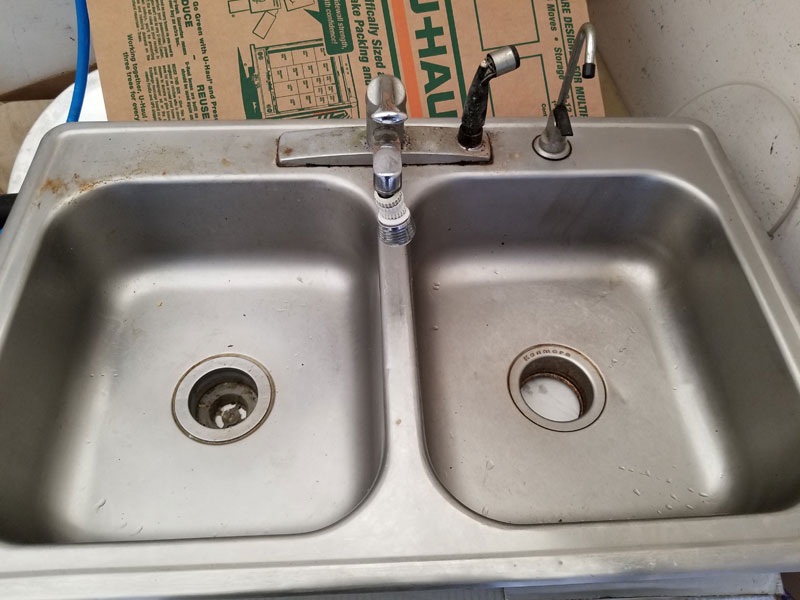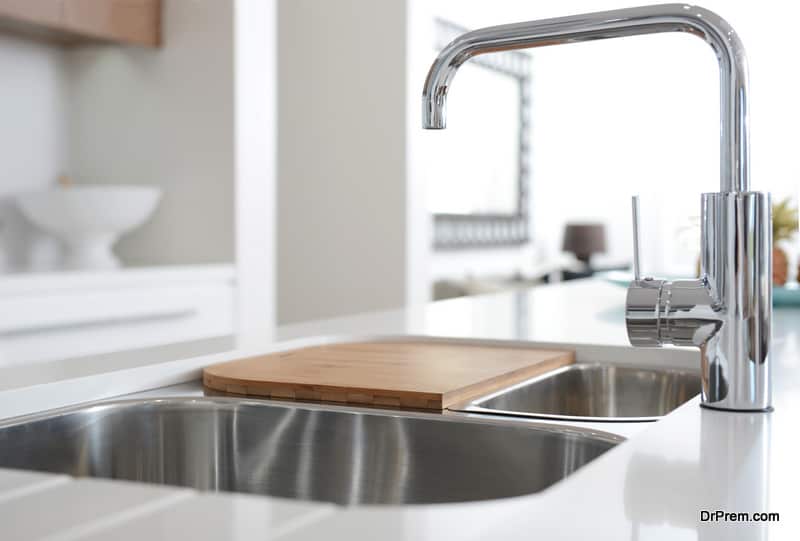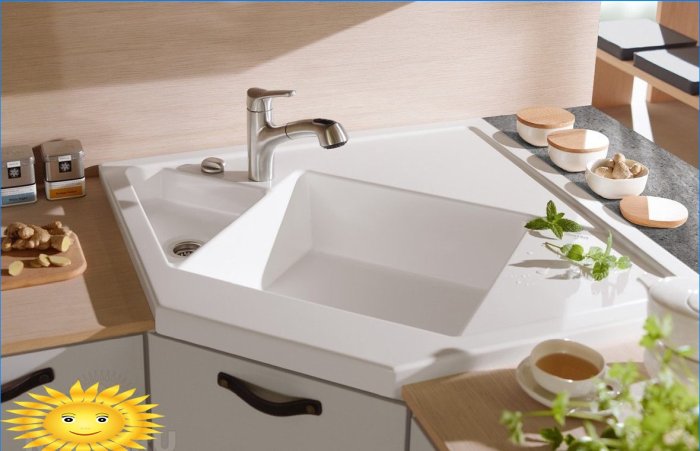How to Change a Sink in Your Kitchen
Changing the sink in your kitchen can be a daunting task, but with the right tools and knowledge, it can be a DIY project that will save you money and give your kitchen a fresh new look. Whether you're looking to upgrade your sink or simply replace a worn-out one, follow these 6 steps for a successful kitchen sink change.
Replacing a Kitchen Sink: 6 Steps
Step 1: Gather Your Supplies
Before starting your kitchen sink replacement, make sure you have all the necessary tools and materials. This includes a new sink, plumber's putty, silicone caulk, a putty knife, adjustable wrench, and a screwdriver. It's also a good idea to have some old towels or rags on hand to clean up any spills or messes.
Step 2: Shut Off the Water
Before removing your old sink, make sure to turn off the water supply lines. This can usually be done by turning off the valves under your sink. If you can't find the valves, you may need to shut off the main water supply to your home.
Step 3: Remove the Old Sink
Once the water is turned off, you can start removing the old sink. Use a wrench to loosen the nuts and bolts that hold the sink in place. Then, carefully lift the sink out and remove any remaining caulk or putty with a putty knife.
Step 4: Install the New Sink
Place the new sink in the designated area and make sure it fits properly. If necessary, use a jigsaw to make any necessary cuts in the countertop. Once the sink is in place, use plumber's putty to create a watertight seal around the edges.
Step 5: Connect the Plumbing
Once the sink is securely in place, you can reconnect the water supply lines. Make sure to tighten the connections with a wrench to avoid any leaks.
Step 6: Caulk the Edges
The final step is to caulk the edges of the sink to create a clean and finished look. Use a silicone caulk and run a bead along the edges of the sink, smoothing it out with your finger or a damp cloth.
DIY Kitchen Sink Replacement
If you're feeling hesitant about tackling a kitchen sink replacement on your own, don't worry. With the right tools and following the steps above, you can successfully change your sink without the help of a professional. Not only will this save you money, but it will also give you a sense of accomplishment and a new skill under your belt.
Upgrading Your Kitchen Sink: A Step-by-Step Guide
Upgrading your kitchen sink is a great way to give your kitchen a fresh new look without breaking the bank. When choosing a new sink, consider the size, material, and style that will best fit your needs and complement your kitchen's design. Once you've made your selection, follow the steps above for a seamless and successful upgrade.
Replacing a Kitchen Sink: Tips and Tricks
Tip: If you're replacing an old sink with a new one of the same size, consider keeping the old sink in place while you make the necessary cuts in the countertop for the new sink. This will prevent any mistakes or miscalculations in the cutting process.
Trick: To easily remove old caulk from around the sink, soften it with a hairdryer before scraping it off with a putty knife.
Kitchen Sink Replacement: What You Need to Know
Before embarking on a kitchen sink replacement, it's important to do your research and gather all the necessary information. This includes the size and measurements of your current sink, the type of material you want for your new sink, and any additional tools or supplies you may need.
Step-by-Step Guide to Changing Your Kitchen Sink
For a quick and easy guide to changing your kitchen sink, refer back to the 6 steps above. Following these steps will ensure a successful and hassle-free sink replacement.
DIY Kitchen Sink Installation: A Beginner's Guide
If you're new to DIY projects, changing a kitchen sink may seem daunting. However, with the right tools, preparation, and following the steps outlined above, it can be a manageable task for beginners. Don't be afraid to ask for help or refer to online tutorials for guidance.
How to Choose the Right Sink for Your Kitchen
When choosing a new sink for your kitchen, consider not only the design and style, but also the functionality and practicality. Think about your daily needs and how the sink will be used, and choose a sink that will best fit and improve your kitchen's functionality.
Replacing a Kitchen Sink: Common Mistakes to Avoid
When changing a kitchen sink, there are a few common mistakes to avoid to ensure a successful installation. These include not turning off the water supply, not properly measuring the sink, and not using enough caulk or putty to create a watertight seal. By being aware of these mistakes, you can avoid them and have a smooth and successful sink replacement.
Why Upgrading to a New Kitchen Sink Can Completely Transform Your Space
:no_upscale()/cdn.vox-cdn.com/uploads/chorus_asset/file/19495086/drain_0.jpg)
Enhance Functionality and Efficiency
 When it comes to the functionality of your kitchen, the sink plays a vital role. It is where you wash your dishes, prepare food, and even fill up pots with water. Over time, your sink can become worn out and outdated, making these simple tasks more difficult. By upgrading to a new kitchen sink, you can improve the efficiency of your space and make daily tasks easier and more enjoyable.
With a wide range of options available, you can choose a sink that fits your specific needs and lifestyle.
If you love to cook and frequently use large pots and pans, a deep, single bowl sink may be the best choice for you. If you have a smaller kitchen, a double bowl sink with a lower divider can provide more counter space. You can also opt for a sink with additional features such as built-in cutting boards, drying racks, or even a garbage disposal.
When it comes to the functionality of your kitchen, the sink plays a vital role. It is where you wash your dishes, prepare food, and even fill up pots with water. Over time, your sink can become worn out and outdated, making these simple tasks more difficult. By upgrading to a new kitchen sink, you can improve the efficiency of your space and make daily tasks easier and more enjoyable.
With a wide range of options available, you can choose a sink that fits your specific needs and lifestyle.
If you love to cook and frequently use large pots and pans, a deep, single bowl sink may be the best choice for you. If you have a smaller kitchen, a double bowl sink with a lower divider can provide more counter space. You can also opt for a sink with additional features such as built-in cutting boards, drying racks, or even a garbage disposal.
Upgrade Your Design Aesthetics
 In addition to enhancing functionality, a new kitchen sink can also greatly improve the overall design of your space.
The sink is often the focal point of the kitchen, and a sleek and modern sink can completely transform the look of the room.
Whether you prefer a farmhouse style sink or a contemporary stainless steel option, there are endless design possibilities to choose from.
In addition to enhancing functionality, a new kitchen sink can also greatly improve the overall design of your space.
The sink is often the focal point of the kitchen, and a sleek and modern sink can completely transform the look of the room.
Whether you prefer a farmhouse style sink or a contemporary stainless steel option, there are endless design possibilities to choose from.
Increase Your Home's Value
 Investing in a new kitchen sink is not only beneficial for your own enjoyment, but it can also increase the value of your home.
Homebuyers are often willing to pay more for a well-designed and functional kitchen.
By upgrading your sink, you can attract potential buyers and potentially increase the resale value of your home.
Investing in a new kitchen sink is not only beneficial for your own enjoyment, but it can also increase the value of your home.
Homebuyers are often willing to pay more for a well-designed and functional kitchen.
By upgrading your sink, you can attract potential buyers and potentially increase the resale value of your home.
Conclusion
 In conclusion, upgrading your kitchen sink is a simple yet effective way to completely transform your space. Not only does it improve functionality and design, but it can also add value to your home. So if you're looking to give your kitchen a fresh new look, consider investing in a new sink. With so many options available, you're sure to find the perfect one for your needs and style.
In conclusion, upgrading your kitchen sink is a simple yet effective way to completely transform your space. Not only does it improve functionality and design, but it can also add value to your home. So if you're looking to give your kitchen a fresh new look, consider investing in a new sink. With so many options available, you're sure to find the perfect one for your needs and style.



:no_upscale()/cdn.vox-cdn.com/uploads/chorus_asset/file/19495086/drain_0.jpg)


























































































